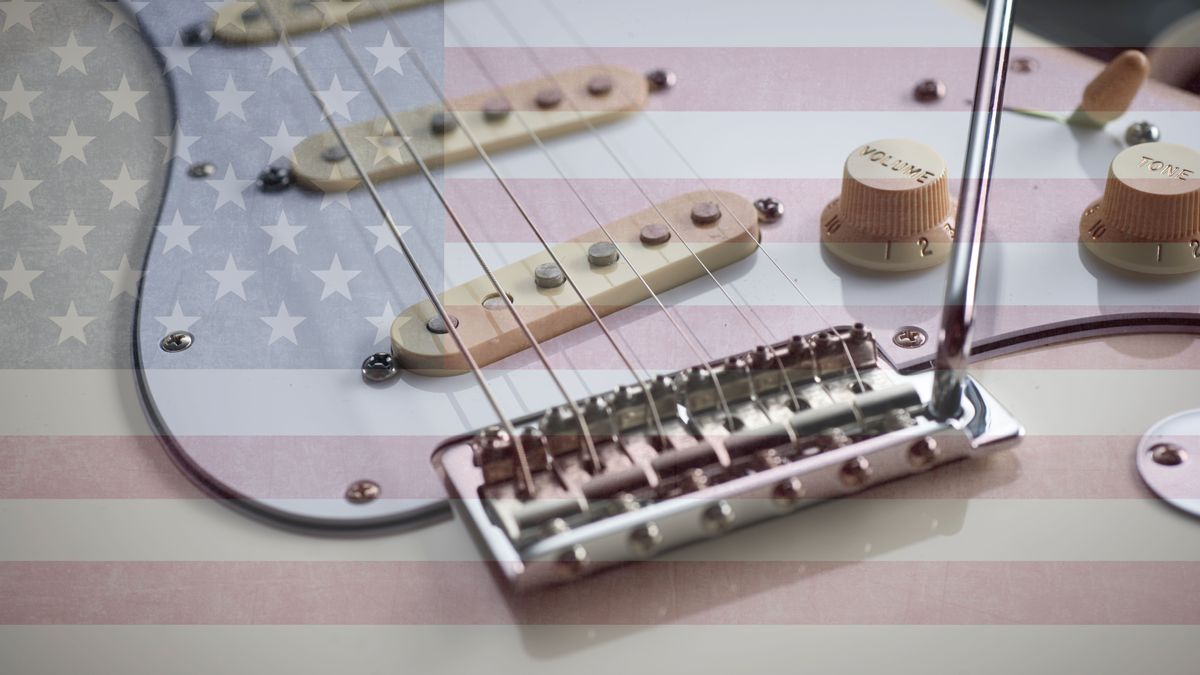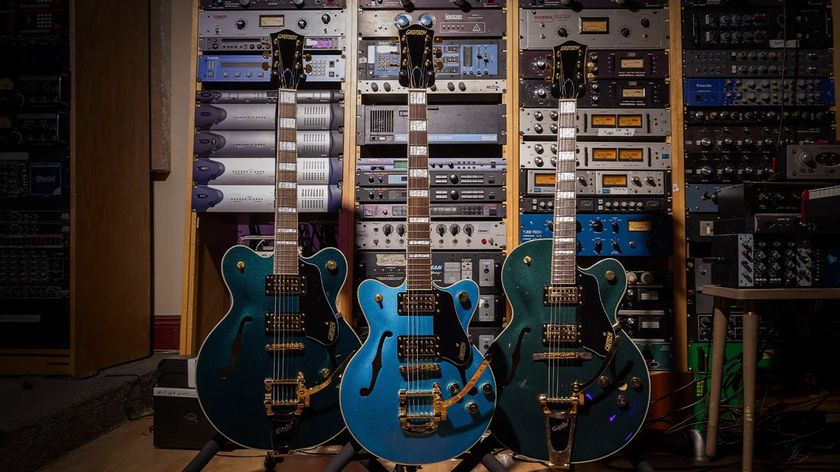The Star-Spangled Banner: the story of a British song, American patriotism and a white Stratocaster that shocked America
How Vai, SRV, Malmsteen and Slash followed in the wake of Hendrix's bold interpretation

At 8.30am on Monday 18 August 1969, a sleep-deprived Jimi Hendrix took to the stage in front of the audience of the Woodstock Festival carrying his now-legendary white Stratocaster. Despite his dislike of large audiences, breaking a string during Red House and his intense fatigue, the 26-year-old played an energetic set of cover versions, established classics and new pieces that would become staples of his emerging Band Of Gypsys project.
After his 12th tune – a rendition of Voodoo Chile segueing into Stepping Stone – Jimi paused and then, with sparse accompaniment, delivered his version of the American national anthem, The Star-Spangled Banner. America’s involvement in Vietnam had dragged on for 14 years with dwindling support from the American public and Jimi’s rendition – replete with screaming feedback; whammy bar dips that mimicked bombs, explosions and artillery fire; and a few notes from The Last Post – spoke of the stark reality of war and echoed the growing resentment of the nation.
With this performance, Jimi – himself a discharged US paratrooper – created an iconic moment for both the '60s generation and the electric guitar. As may be expected, the performance was not without criticism; dissent against the war was considered unpatriotic and anything other than a reverent rendition of the anthem was tantamount to flag burning.
Despite the deep-felt attachment many Americans have to The Star-Spangled Banner, it isn’t an American tune. It was, in fact, written in the 1760s by the British organist and composer John Stafford Smith (1750-1836) when he was just a teenager. Smith, an avid musicologist and score collector, wrote the tune for the ‘Anacreontic Society’ a London-based gentleman’s club of amateur musicians.
Named after the 6th century BC Greek poet Anacreon, the club shared a love of drinking and music, and hosted concerts with such master musicians as Joseph Haydn. Smith’s melody was given lyrics by Ralph Tomlinson – the club’s president – to form the Anacreontic Song, the official tune of the society. It became a popular drinking song, despite the melody being tricky to sing, even when sober.
Once imported to the US, it was popular and set to various lyrics – including, ironically, Francis Scott Key’s 1814 poem The Defence Of Fort McHenry, a rousing account of the US fort’s valiant defence against the bombardment of the British Army in the War of 1812. This mix of the British composer’s music and the US lawyer’s lyrics became known as The Star-Spangled Banner and was adopted officially by the US Navy in 1889, the President in 1916 and as America’s national anthem in 1931.
When the public feels a line is crossed in performance, players can expect controversy
Although reinterpretations and stylistic renditions of The Star-Spangled Banner are now perfectly acceptable, even expected, when the public feels a line is crossed in performance, players can expect controversy. Hendrix was not the first nor the last to be criticised for ‘desecrating’ the piece: Jose Feliciano’s slow, guitar-strummed bluesy version performed for the 1968 World Series was met with deep criticism, for instance. To this day, any rendition that’s played with a sense of irony or comedy to it can still cause widespread offence.
Get the MusicRadar Newsletter
Want all the hottest music and gear news, reviews, deals, features and more, direct to your inbox? Sign up here.
Even well-intentioned renditions are not without controversy when lyrics are forgotten or notes missed; Stevie Ray Vaughan’s 1985 slide guitar performance at a Houston Astros baseball game was fraught with memory slips and met with jeers from the audience.
In fact, performance errors are common; the tune is hard to sing, as a host of celebrities, athletes and other non-professional singers have found out to their horror while millions listened. The melody spans a wide octave-and-a-half range and includes a note from outside of the key (our arrangement is in G major, so the non-diatonic note is a C#). However, it is this heroically wide melodic range, the majestic leading tones and its rousing lyrics that, when played correctly, create such a powerful impression for the listener.
Despite the controversy surrounding Jimi’s version, electric guitar Star-Spangled Banner renditions are now common and widely accepted, even when delivered with extreme rock guitar tones and tricks. Ted Nugent colours the melody with Texan-style double-stops interspersed with wah-filtered trills, tremolo picking and bluesy runs. Slash takes a more stately, almost careful, approach with slow bends, wah-wah and long, sustained feedback.
Joe Satriani delivers the melody quite simply with his characteristic vocal-like tone. Eric Johnson, on the other hand, takes liberties with the tune, re-harmonising sections and elaborating the melody with his trademark exquisite pentatonic runs and wide interval patterns.
Steve Vai performs the song with typical technical accuracy, but interjects virtuosic legato runs, harmonics, wild divebombs and abstract chord voicings.
Dave Mustaine opts for a respectful, simple approach. Of course, Yngwie Malmsteen simply can’t resist embellishing the melody with wide vibrato, neo-classical trills and sweep-picked arpeggios.

“The mini humbucker fits into the same sized pickup cavity as a P-90 and delivers low-noise humbucking pickup performance and a slightly brighter and more open tone”: Gibson remixes the Les Paul Special with mini humbuckers

“Exceptional performance, sound, and style at an incredible value.”: Gretsch unveils trio of limited edition Streamliner electrics that offer Bigsby wobble, semi and hollow-bodied rock ’n’ roll mojo for $699








